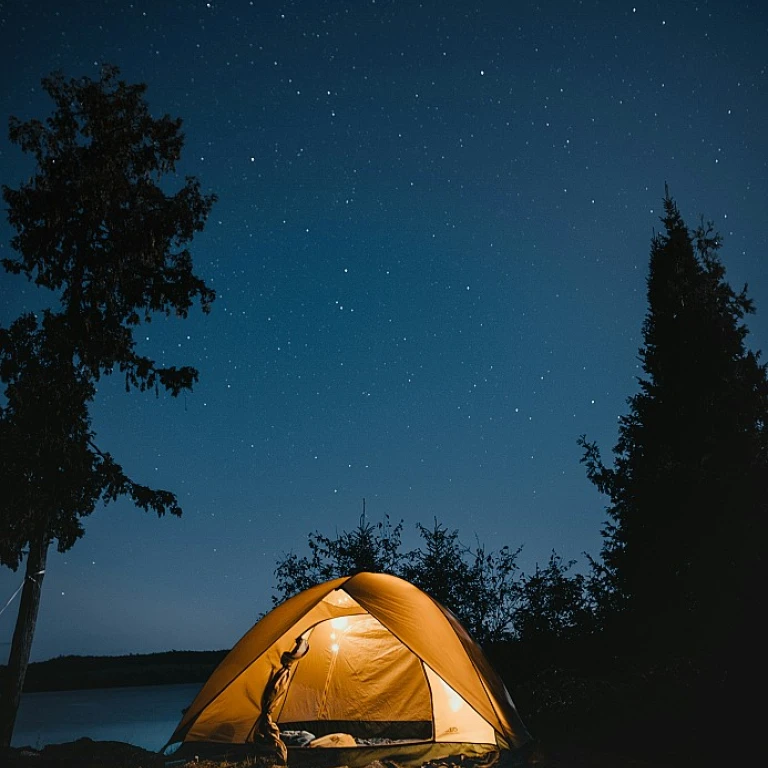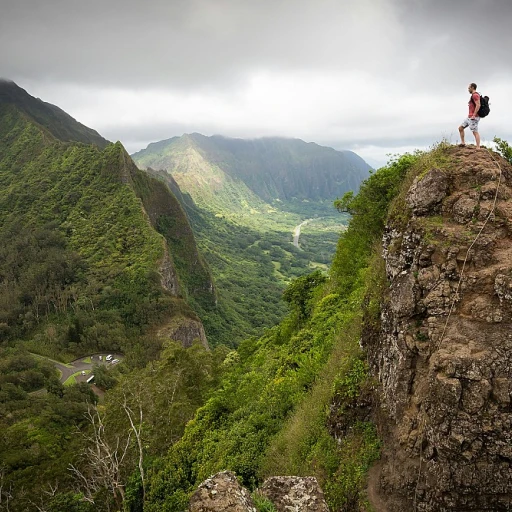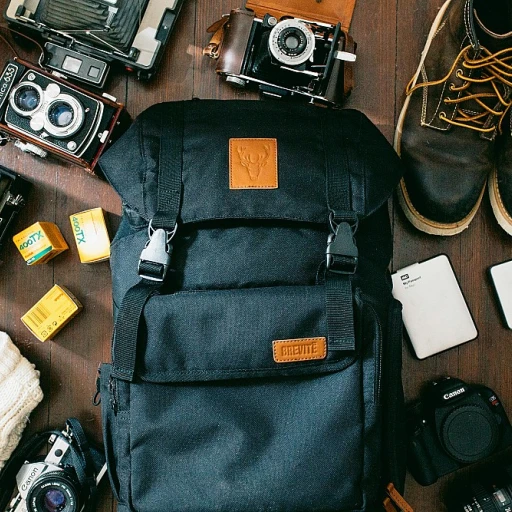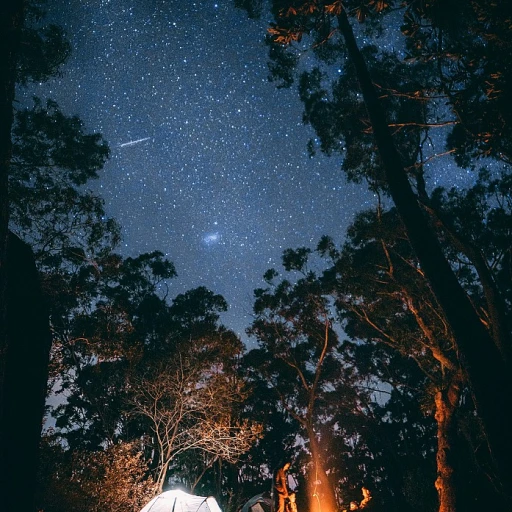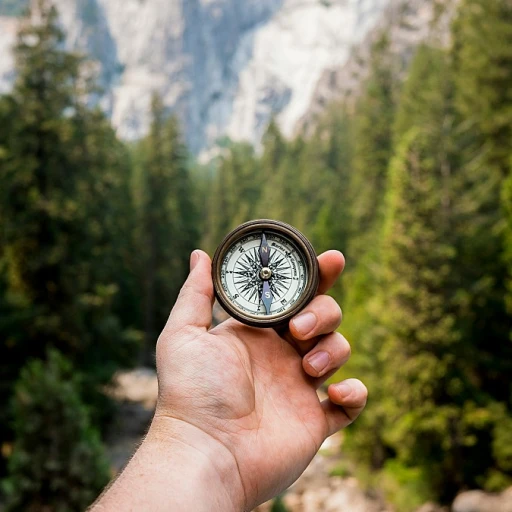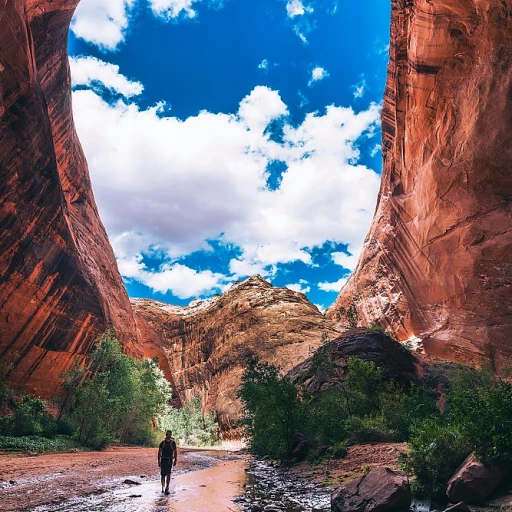The allure of the Inca Trail: why it's a bucket-list trek
Unraveling the mystique behind the trek
The Inca Trail to Machu Picchu in Peru isn't just another hike; it's an experience that combines history, culture, and breathtaking scenery. This arduous yet rewarding trek is often considered a bucket-list item for both seasoned hikers and adventure enthusiasts alike. But why does it draw so many to its ancient paths?
Stepping through history
Imagine walking where ancient Incas once tread. The Inca Trail offers an unparalleled connection to the past, taking you through ruins that date back centuries. According to the National Institute of Culture in Peru, an estimated 250,000 people visit Machu Picchu every year, many choosing the Inca Trail for their journey. The trail showcases not just Machu Picchu but also other ancient sites such as Wiñay Wayna and Intipata, making it a journey through time.
Stunning natural beauty
From lush cloud forests to high mountain passes, the Inca Trail boasts an incredibly varied landscape. The Dead Woman Pass, one of the highest points on the trail, stands at about 13,780 feet (4,200 meters). According to a study by the Universidad Nacional Agraria La Molina, the unique ecosystems around the trail support a wide variety of flora and fauna, some found nowhere else on Earth. This blend of natural beauty and biodiversity elevates the hike from a physical challenge to a spiritual journey.
Physical and mental challenge
Completing the Inca Trail will test your limits, both physically and mentally. Hikers need to be prepared for long days of trekking, steep ascents, and unpredictable weather conditions. Peter Frost, a well-known explorer and author, says, “The Inca Trail is not just about reaching Machu Picchu; it’s about the journey itself. Each step taken on this ancient path is a step towards personal growth.” Comprehensive training and preparation are essential, which we'll cover in greater detail later in the guide.
Community and camaraderie
One of the most rewarding aspects of the trek is the bond you form with fellow hikers. Sharing meals, stories, and challenges forges a sense of community that adds a unique element to the adventure. Alpaca Expeditions, a prominent tour operator on the trail, emphasizes the importance of group dynamics, stating that the shared experience creates lifelong friendships and memories.
As we explore the logistical aspects, physical preparations, and alternative routes in the following sections, you'll gain a comprehensive understanding of why the Inca Trail continues to captivate the hearts and minds of adventurers from around the world.
Permits and planning: navigating the red tape
Understanding the inca trail permits and requirements
The Inca Trail to Machu Picchu is a dream trek for many, but it requires some bureaucratic navigation to secure your spot. With only 500 permits issued each day, advanced planning is crucial. According to Inca Trail Machu, these permits are distributed to both hikers and support staff, so they can sell out months in advance.
In 2019, more than 90% of permits were booked within the first few months of the year. This high demand means you need to be strategic about securing your permit. Experts like Lizandro Quispe, who works with Alpaca Expeditions, recommend booking at least six months ahead.
Steps to book your inca trail permit
When you're ready to book your trek, follow these steps:
- Check availability real-time on the Peruvian Ministry of Culture's website.
- Select a reliable and licensed tour operator. Organizations like Salkantay Trekking often provide a full package, ensuring all permits and logistics are handled.
- Confirm your trip by paying the permit fee, which is around $70 USD for adults as of 2023.
- Secure additional permits if you plan to hike Huayna Picchu or Machu Picchu mountain for an extra cost of about $75 USD.
Choosing between the classic inca trail and the short inca trek
If time is a constraint, you might prefer the Short Inca Trail, a 2-day option that combines a shorter hike with a visit to Machu Picchu. While the Classic Inca Trail spans 4 days and 3 nights, the Short Inca Trail offers a glimpse of the experience without the same level of physical demand. The benefits are clear: less time off work and still arriving at the iconic Sun Gate.
Both routes start from Cusco, moving towards Ollantaytambo from where the trek initiates. A journey like this often combines with other destinations in the Sacred Valley, giving trekkers a comprehensive look at the rich Incan history.
Navigating altitude and health concerns
Altitude can be a challenge, as the trail reaches an elevation as high as Dead Woman Pass at 4,215 meters (13,828 feet). Acclimatization is key. Gear up with a few days in Cusco or other high-altitude areas of Peru beforehand. Use local remedies like coca tea and allow your body time to adjust.
Final thoughts
Securing your Inca Trail permits and planning ahead might seem daunting but breaking it down step by step makes it easier. Remember, the rewards of this journey—a chance to walk in the footsteps of the Incas, culminating in the awe-inspiring sight of Machu Picchu—are well worth the effort.
Choosing the right tour operator for your Inca Trail adventure
Finding the perfect match: tour operators compared
Choosing the right tour operator for your Inca Trail adventure is crucial to ensure a memorable and smooth experience. With several companies vying for attention, it can be daunting to decide which one to opt for. Let's dive into some of the top operators and what makes them stand out.
Alpaca expeditions: top-rated service
Alpaca Expeditions is often highlighted for its excellent customer service and well-organized tours. They stand out with a 98% customer satisfaction rate and a high percentage of positive reviews on platforms like TripAdvisor.1 Alpaca Expeditions is known for its responsible tourism practices and community support within Peru. They don’t just lead you through the Inca Trail hike; they ensure that local communities are also benefiting from the influx of tourists.
G Adventures: sustainable and small group treks
G Adventures places a strong emphasis on sustainability and small group sizes, making it a popular choice for eco-conscious travelers. Their tours are designed to minimize environmental impact, and they often include cultural immersion activities. According to a 2022 study by the Adventure Travel Trade Association (ATTA), sustainability is a top concern for 60% of adventure travelers.2
Explorandes: pioneers of the Inca Trail
Explorandes is one of the pioneers in offering Inca Trail tours, with over 40 years of experience. They provide specialized routes and a deep understanding of the trail's history and landscape. Explorandes also partners with local guides who bring rich cultural insights to the hike.3
Intrepid Travel: flexible and inclusive options
Intrepid Travel is known for its variety and flexibility in tour options. Whether you're looking for a short inca trail experience or the classic four-day trek, they have packages that cater to different preferences and fitness levels. They also offer various departure dates, making it easier to fit the trek into your schedule.4
Comparing costs and inclusions
The cost of Inca Trail tours varies widely. While price shouldn't be the only deciding factor, it’s essential to understand what you’re getting for your money. Prices range from around USD 500 to 1000, depending on the included amenities, like the quality of accommodation in Aguas Calientes, meals, and other perks.5 Make sure to review what each package includes: guided tours, permits, meals, and transport from Cusco.
Personal touches and recommendations
When deciding on a tour operator, consider any personal recommendations from friends or family who have completed the trek. Positive past experiences can be a strong indicator of reliable service. Web forums and online reviews are also valuable resources for first-hand insights. And if you're interested in exploring other beautiful destinations, check out our article on Snow Canyon State Park for more inspiration.
Training and preparation: getting in shape for the trek
Readying your body for the challenge
Conquering the Inca Trail to Machu Picchu is an exhilarating adventure, but it’s not for the faint-hearted. To make sure you’re prepared for those 4 days and 3 nights in Peru’s rugged terrain, you’ll need to start training well in advance. Experts recommend beginning your fitness regime at least three to six months beforehand.
According to a report by Springer, around 60% of first-time trekkers underestimate the physical demands of the Inca Trail, leading to various degrees of exhaustion. Avoid being part of that statistic by focusing on cardio, strength training, and mental endurance.
Hitting the gym and the trail
To mimic the trail conditions, incorporate hikes into your routine that gradually increase in length and difficulty. Aim for at least two to three long hikes (5-8 hours) under your belt before departure. If the geography around you doesn't allow for this, the treadmill with an inclined setting can be a good supplement. Experienced trekkers suggest doing stair climbing exercises and carrying a weighted backpack to simulate the real conditions.
For cardio, activities such as running, cycling, or swimming can build up your stamina. Strength training should focus on your core, legs, and upper body since you'll be carrying a backpack loaded with essentials.
Firsthand experiences from seasoned hikers
Take it from Jane Webster, a hiking enthusiast who conquered the Classic Inca Trail with Alpaca Expeditions. “I knew the trail would be tough, but the altitude was what knocked me off my feet. Consistent training really made a difference. Focus on those lunges, squats, and stair climbs—your legs will thank you,” she shares.
The Inca Trail trek can reach altitudes over 4,200 meters at Dead Woman Pass. To minimize altitude sickness, many hikers use acetazolamide (Diamox) but make sure to consult with your doctor first.
Don't overlook mental preparation
Preparation isn't solely physical. Mental readiness plays a big role too. Long treks can be arduous, and a tough mindset can make all the difference. Experts report that over 25% of trekkers feel overwhelmed at some point during the hike. Visualization techniques, mindfulness, and even hypnotherapy could help you stay focused and in a positive frame of mind.
Testing your gear ahead of time
Nothing ruins a trip faster than uncomfortable gear. Break in new hiking boots and carry out a few test hikes with all the gear you plan to take. Don’t forget to test your clothing layers, hydration systems, and any trekking poles to ensure everything works as it should. The right gear can alleviate unnecessary hardship on the trail.
Ready for the challenge? Training and preparation are key to a successful trek. Getting fit is half the battle; it’s time to tackle the Inca Trail with confidence.
Detailed day-by-day breakdown of the Inca Trail
Day 1: Departure from Cusco to Ollantaytambo and the starting point at km 82
Your adventure begins early morning from Cusco, with a 1.5-hour drive to Ollantaytambo, a charming town often called the 'Living Inca City.' From there, you head to km 82, the official start of the Inca Trail. This first day's hike is fairly easy, covering approximately 11km, allowing you to acclimate to the altitude. You'll pass through small Andean villages and archaeological sites such as Llactapata, immersing yourself in Peru's rich history right from the get-go.
Day 2: The ascent to Dead Woman's Pass
On Day 2, brace yourself for the most challenging part of the trek: the climb to Dead Woman's Pass (Warmiwañusca). At 4,215 meters, this is the highest point of the Inca Trail. The climb is steep and demanding, stretching over 12km, but the breathtaking views and the sense of accomplishment make it well worth the effort. After descending into the Pacamayo Valley, you'll camp for the night, resting up for the next day's adventures.
Day 3: Exploring Inca ruins and cloud forests
The third day is unforgettable, as you traverse diverse landscapes, from cloud forests to high-altitude plains. You'll visit stunning Inca sites like Runkurakay, Sayacmarca, and Phuyupatamarca, each showcasing the architectural genius of the ancient civilization. This 16km hike is not as strenuous as Day 2, giving you the chance to enjoy the vibrant flora and fauna along the way. The day ends near the ruins of Wiñay Wayna, which translates to 'Forever Young,' and is a beautiful example of Inca terracing.
Day 4: The grand finale at Machu Picchu
Day 4 starts very early, but the reward is worth it. You'll hike a short distance to the Sun Gate (Intipunku) where you get your first magical glimpse of Machu Picchu at sunrise. From here, the full grandeur of the ancient city spreads out before you, an awe-inspiring sight. After descending to Machu Picchu, you will have plenty of time to explore its wonders, with a guided tour that offers deep insights into its historical and cultural significance. Some trekkers even take an optional hike up Huayna Picchu or Machu Picchu Mountain for an unparalleled view of the site.
Optional: Short Inca Trail for those on a time crunch
If you can't spare four days, the Short Inca Trail offers a fantastic alternative. Starting at Km 104, this 2-day trek covers the last segment of the Classic Inca Trail, including the visit to Wiñay Wayna and reaching Machu Picchu through the Sun Gate. This shorter yet equally rewarding option lets you experience the highlights of the Inca Trail without the extended time commitment.
Experiencing Aguas Calientes and Cusco post-trek
After exploring Machu Picchu, a short bus ride takes you to Aguas Calientes, a quaint town where you can relax in thermal baths before catching a train back to Cusco. The journey doesn't end when the hike does; both Cusco and the Sacred Valley offer a wealth of post-trek delights, from culinary delights to more historical sites. Spend some time visiting Cusco's vibrant markets, stunning cathedrals, and enjoying the local cuisine to fully round out your Inca Trail experience.
Alternative routes: the Salkantay Trek and others
Exploring the salkantay trek and other popular alternatives
If the classic Inca Trail is booked or if you're in the mood for a slightly different adventure, consider the Salkantay Trek. Named one of the top 25 treks in the world by National Geographic, the Salkantay is not just a back-up plan; it's a standout trek in its own right. These trails offer unique views and experiences, each with its own flavor and challenges.
The Salkantay Trek stretches over 46 miles (74 km) and typically takes about 5 days to complete. Starting in Mollepata and winding its way to Aguas Calientes, the trek offers breathtaking views of the Salkantay Mountain, which stands at 20,574 feet (6,271 meters). One of the major advantages of this trek is that you don't need a permit, which can be a lifesaver if your plans are last-minute.
Scenic highlights: You’ll be hiking through high mountain passes, cloud forests, and jungles. One minute you’re on icy peaks, the next in lush greenery. The altitude can be a challenge, so make sure you're acclimated.
Shortest routes for those tight on time: If you’re short on time but still want to experience the allure of the Inca paths, consider the Short Inca Trail. This one begins at KM 104 and takes just two days. You’ll still get to trek through breathtaking landscapes and pass key Inca ruins, ending at the iconic Sun Gate entrance to Machu Picchu.
The Choquequirao Trek: For the adventurers looking for a less crowded and more challenging experience, the Choquequirao Trek should be on your radar. Often dubbed the “sister city of Machu Picchu,” Choquequirao is a sprawling complex that sees far fewer tourists due to its remote location and tough trails.
Remember, each of these treks requires some preparation and planning. Make sure to book with reputable tour operators like Alpaca Expeditions, who offer guided trips ensuring your adventure is safe and well-organized.
Exploring alternative routes like the Salkantay Trek or Choquequirao can significantly enrich your hiking experience. It offers a different perspective of the Sacred Valley and allows for a more intimate encounter with Peru's natural beauty and historical depth.
Dealing with altitude and other common challenges
Grappling with altitude: what you need to know
Let’s be real, the altitude on the Inca Trail can trip you up more than the uneven paths. Cusco sits at around 11,152 feet—higher than anywhere in the UK, for instance. If you're coming from sea level or any low-altitude area, odds are you’ll feel it.
Here's a kicker: you gotta spend at least two days in Cusco before hitting the trail, some experts suggest three. It helps your body adjust, reducing the risk of altitude sickness or
To prep, stay hydrated like it’s your full-time job. Forget fancy altitude pills; plain old water and coca tea are your best pals. Coca tea's been helping people for centuries. Avoid alcohol and caffeine; they can dehydrate you.
Common challenges and how to conquer them
Water scarcity can be an issue along the trail. Plan to carry a supply of water purification tablets, as recommended by seasoned hikers.
The sun's no joke either. With thin air and minimal shade, UV exposure is intense. Slather on SPF 50 sunscreen regularly unless you wanna end up with a Maori-like tattoo of sunburn. A wide-brimmed hat is your second line of defense.
Footwear matters more than fashion here. Proper hiking boots prevent blisters and offer ankle support. Pick boots that are well-worn in; no one wants to break them in mid-Peruvian wilderness. Trust us, from sore nights to Band-Aid plasters, it's a misery.
Mental challenges are real too. Day 2 is infamous for being grueling—Dead Woman’s Pass sits at 13,828 feet, the trail’s highest point. Mental fortitude helps. Supporting each other within your group turns it into a social experience rather than an isolating one.
Remember what you packed in? Pack it out. Especially toilet paper, since you won't find bins along the trail.
Little-known tips from veteran hikers
Did you know biting a lemon slice can alleviate nausea caused by altitude? Or that acclimatizing at Aguas Calientes before tackling Huayna Picchu might give a tiny edge? A veteran hiker shared that chewing on ginger candies can also help with nausea.
And hey, even professional guides have had to make emergency changes; it’s all part of the adventure!
Reminding yourself why you started
Through every cramp and gasp, remember what’s at the end—Machu Picchu. That first glimpse catches your breath more than the altitude. Trust our words, standing at the Sun Gate is worth every challenge you face.
Post-trek delights: enjoying Cusco and the Sacred Valley
Savoring the cultural richness of cusco
After conquering the inca trail, many trekkers find solace and excitement in the vibrant city of Cusco. This former capital of the Incan empire is a mosaic of cobblestone streets, grand cathedrals, and bustling markets. It's like stepping back in time while still having the amenities of modern life. You can stroll around Plaza de Armas, where local life converges, or delve into the history at Qorikancha, the Sun Temple. The energy in Cusco is palpable, making it an essential part of the post-trek experience.
Exploring the sacred valley
Just a short trip from Cusco lies the Sacred Valley, a place as mystical as its name suggests. This sprawling valley is dotted with archaeological sites like Pisac and Ollantaytambo that offer a deep dive into Incan history. You'll find picturesque Andean villages where traditional lifestyles are still very much alive. Don’t miss the bustling market in Pisac; it’s a unique opportunity to buy handmade crafts and taste local delicacies.
Relaxing in aguas calientes
After the physically demanding trek, a stop at Aguas Calientes, just below Machu Picchu, is like a little slice of paradise. The town is famed for its soothing hot springs, perfect for easing those sore muscles. Here you can also enjoy a quieter atmosphere compared to the hustle and bustle of Cusco, making it the ideal place to reflect on your journey. Indulge in some local cuisine at one of the many cosy restaurants scattered around town.
Immersing in cusco's culinary scene
Peru is known for its culinary prowess, and Cusco is no exception. Celebrated chefs and local haunts offer a plethora of dining experiences that tantalize your taste buds. Whether it’s the national dish, ceviche, or the street food favorite, anticuchos, you're in for a treat. Don't leave without trying a traditional pisco sour; it's the Peruvian way to toast your successful trek.
Opt for alpaca expeditions' personalized tours
For those looking to further extend their adventure, Alpaca Expeditions offers personalized tours of Cusco and the surrounding areas. These tours are designed to be as enriching as possible, providing deeper insights into the region’s history, culture, and natural beauty. Their knowledgeable guides are proficient in sharing the tales and secrets of the Incas, ensuring a memorable experience.
Taking the time to acclimate
Don't underestimate the importance of acclimatization in Cusco, especially after your trek. Take a day or two to rest and adapt to the altitude. Simple activities like shopping at the San Pedro Market or visiting the Chocolate Museum can be both relaxing and rewarding. It’s an easy way to wind down while still soaking in the local vibe.
Customizable day trips from cusco
If your schedule allows, consider customizable day trips from Cusco. Popular options include visiting the intricate Maras Salt Mines or the Moray archaeological site with its unique circular terraces. These trips provide a deeper understanding of the ingenious agricultural practices of the Incas without the physical exertion required by the inca trail. Make sure to book these excursions in advance to ensure availability.
Local festivals and events
Cusco's rich culture is reflected in its numerous festivals and events. If you’re lucky, your post-trek timing might coincide with Inti Raymi, the Festival of the Sun, held every June. This vibrant celebration involves colourful costumes, traditional dances, and ritualistic ceremonies that revive the spirit and heritage of the Incas. Experiencing such an event is the perfect way to round off your visit to Peru.

